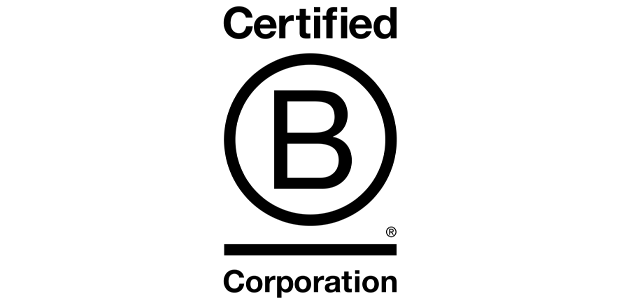
A-Z of becoming a B Corp: The journey to certification as a scaleup
Fresh off the back of B Corp month 2024, at Kontor we’re thrilled to achieve B Corp certification ourselves, a milestone which prompts us to share our journey, particularly for the benefit of other startups and scaleups aiming for the same.
Supporting over 600 industry leaders including Monzo, Deliveroo, and Revolut, Kontor helps companies find best-in-class offices by acting as a real estate partner.
After a twelve month timeline, we've navigated the exciting yet complex path to B Corp status, a journey echoing the experiences of Bloom & Wild, Cawston Press, and The White Company.
Driven by a commitment to genuine impact in a world familiar with greenwashing, we've gleaned valuable insights, from social practices to Impact Reports.
Committed to not gatekeeping, welcome to your ABC’s of B Corp!
A is for a quick intro. It wouldn’t be fair to jump in cold, right? Joining the B Corp movement means adhering to the highest standards across social and environmental performance, transparency and accountability.
B is for B Impact Assessment. Any business wanting to certify must conduct a B Impact Assessment to access, compare and improve To certify, you have to score at least 80 points across five categories - Community, Customers, Environment, Governance and Workers.
C is for community, the first category, and how a business is judged against factors contributing to the wider community. This could be charity, gender-related and diversity & inclusion policies, and is a high-scoring area for many businesses.
D is for diversity and inclusion, an overarching theme of importance throughout the process, and how your business scores against attracting, recruiting and retaining a diverse team representative of a wide customer base.
E is for environment, another of the five categories, covering emissions and waste reporting targets and policies.
F is for Future Shift. A shout-out for the team who help guide businesses of all shapes and sizes on their B Corp certification journey, including Kontor.
G is for governance. Another of the five categories, including mission and governance policies.
H is for aiming higher and continually doing better, something you’ll feel encouraged to do throughout the process and during recertification (more on that below).
I is for Impact Reports. After starting the process, each business is legally obliged to publish an annual impact report, detailing anything performance or operations-related that may affect your social and environmental impact now or in the future.
J is for jargon-free. An influx of new terms and phrases can feel overwhelming at times, especially when much of it is Americanised, but rest assured it doesn’t take too long to become familiarised.
K is for knowing your customers, another of the five categories. Do you support a disadvantaged group? How is customer satisfaction monitored? All of these ladder up to scoring highly in this area.
L is for legals. Articles of association - aka your official legal documents - need to be updated throughout the certification process and re-uploaded to Companies House. Top tip: get your founder, CEO and legal or operations team on board early for this!
M is for materiality assessment. A simple way to rank your business across the five categories. Best conducted via a team post-it session to spark engagement and discussion.
N is for not just green practices. As we’ve learnt, B Corp isn’t restricted to all things green and recycling, it’s about societal factors as much as it is the environmental impact.
O is for putting people and the planet over profits. Doing better requires changing for the better. If you’re not able to prioritise this, the B Corp journey might not be the best route.
P is for policies. Passionate about meeting certain standards but don’t yet have a documented policy in place? Fear not. These can be developed during the submission phase and still count towards your final score.
Q is for quick wins. B Lab outlines a few quick wins to help improve your score: Monitoring and recording energy, water and waste usage, sharing financial information with employees, and writing and circulating a Supplier Code of Conduct, to name a few.
R is for recertification, which takes place every 3 years and provides the opportunity to continually evolve how the company is conducted, and how the team works together.
S is for submission. As alluded to above, your submission doesn’t have to be perfect from the get-go. The process can take at least 3 months, and during this time you’ll be able to edit and update items.
T is for taking the time to check your criteria. You’ll answer different questions based on your industry but - based on experience - review the full scope before getting stuck in to ensure you’re on the right path.
U is for understanding. Bring stakeholders - especially senior stakeholders - on the journey and it’ll be much easier to get buy-in. Not only will they require sign-off, but their knowledge will be needed to gather vital information.
V is for vetting. If you create a product, or work with multiple suppliers, each one requires vetting. From ingredients to transportation practices, factor this into the timeline.
W is for workers. The final of the five categories, with huge potential for high scoring. HR policies, living wages, healthcare coverage and supplementary health benefits (such as wellbeing apps like Sonder), pension, and employee satisfaction are all included here.
X is for X-rated businesses. We joke, but there’s particular limitations across industries which you can work with. For example, only 1% of business revenue can be derived from gambling companies.
Y is for YES, you may be surprised at how much you already have in place to score highly, especially within the workers category.
Z is for getting in the zone. Now you’ve made it to the end of this quick-fire B Corp round, you should be ready to get in the zone and make that positive change.

